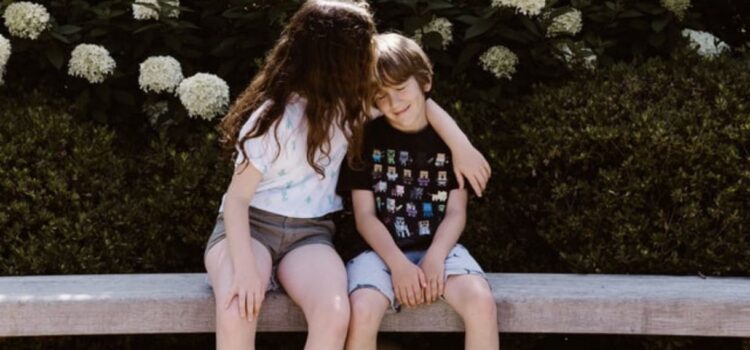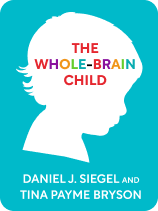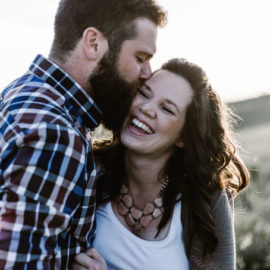

This article is an excerpt from the Shortform book guide to "The Whole-Brain Child" by Daniel J. Siegel and Tina Payne Bryson. Shortform has the world's best summaries and analyses of books you should be reading.
Like this article? Sign up for a free trial here .
How do you explain conflict resolution to a kid? What are some strategies to teach conflict resolution skills to children?
Conflict resolution requires multiple social skills that your child needs help developing. Specifically, teaching conflict resolution to kids involves teaching them to see another person’s perspective, interpret nonverbal communication, and make amends for their wrongdoing.
Here are some basic skills for conflict resolution in kids.
Conflict Resolution Skills for Kids
Although unpleasant, every disagreement your child has—with you, with a sibling, or with a friend—is an opportunity to teach her healthy and effective ways to manage conflict. Here are skills for conflict resolution for kids.
Skill #1: Seeing Another Person’s Perspective
Considering another person’s perspective is an important aspect of conflict resolution. Kids can practice this skill by frequently asking questions about how someone else might feel and why someone may have reacted in a certain way. Pose these questions after an interaction you or your child has, about strangers you observe, or about characters in a book. This will get your child in the habit of thinking about other people’s perspectives.
Then, when your child is in the midst of an argument, put these skills to work. First, stay calm and demonstrate empathy. If your child comes to you complaining that her brother called her a name, resist the urge to dismiss and deny her grievance by asking how she provoked her brother or telling her to stay away from him. Instead, connect emotionally with your child, and then help her consider her brother’s perspective, and ask her what might have made her brother so upset that he would lash out.
Skill #2: Interpreting Nonverbal Communication
Nonverbal communication—including posture, gestures, facial expression, and tone of voice—is a major aspect of communication. (Shortform note: In fact, experts say that nonverbal cues account for a far larger percentage of communication than merely the words that are spoken.) The more your child practices reading nonverbal cues, the more empathy she’ll develop, and the better she’ll be able to connect with people.
Help your child learn to read nonverbal cues by helping her to notice other people’s body language and explaining the emotions it reflects. For example, after your child wins her soccer game, point out that her friend on the losing team is looking at the ground and has her shoulders slumped, which probably means she’s feeling disappointed about the loss.
Skill #3: Making Amends
When your child has an argument, sometimes an apology isn’t enough to smooth things over. Teach your child that there are times when she needs to do a follow-up action to make things right after a conflict, and help her to determine the appropriate action. There are generally two kinds of responses she can take:
- A direct response: Fixing, rebuilding, or replacing something that was broken during the argument.
- A relational response: Taking another approach to show regret and mend the relationship, such as writing a letter of apology, doing something kind for the other person, or drawing a picture to give to the other person.
When you prompt your child to decide which kind of response is needed and how to carry that out, she gets to practice empathy and attuning to another person’s feelings. First, she has to imagine the other person’s perspective enough to imagine why he’s upset. Then she has to put herself in his shoes to determine what might make him feel better. This role-playing is one of the important skills of conflict resolution for kids.
Tips for Teaching Conflict Resolution to Kids at Different Ages
Ages 0-3: At this age, your child’s ability to share and empathize is limited. Nonetheless, when she gets into a conflict with another child, help her to identify her emotions, guide her toward recognizing the other child’s emotions, help her come up with a resolution, and then shift her focus to another activity.
Ages 3-6: At this age, your child is better able to practice taking turns, sharing, apologizing, and forgiving. Talk with her about the give-and-take required in relationships, explain how important it is to be considerate of other people (even when she’s upset), and lead by example.
Ages 6-9: Be more explicit with your child about the three skills we discussed, and help her to practice them. After you explain the importance of considering other people’s perspectives, go to a public place together to observe people and speculate what they might be feeling. When you teach her about nonverbal communication, challenge her to think of as many examples as you can, such as shrugging your shoulders or raising your eyebrows. When you talk about making amends when an apology isn’t enough, brainstorm a recent incident and something your child can still do to make things right.
Ages 9-12: As your child gets older and more mature, continue talking about and helping her to practice these skills. Explain that conflicts are opportunities to problem-solve and to strengthen the relationship.

———End of Preview———
Like what you just read? Read the rest of the world's best book summary and analysis of Daniel J. Siegel and Tina Payne Bryson's "The Whole-Brain Child" at Shortform .
Here's what you'll find in our full The Whole-Brain Child summary :
- How to increase your child's self-awareness and emotional control
- Why the logical and emotional sides of the brain have to work together
- How to figure out why your child is afraid of something






